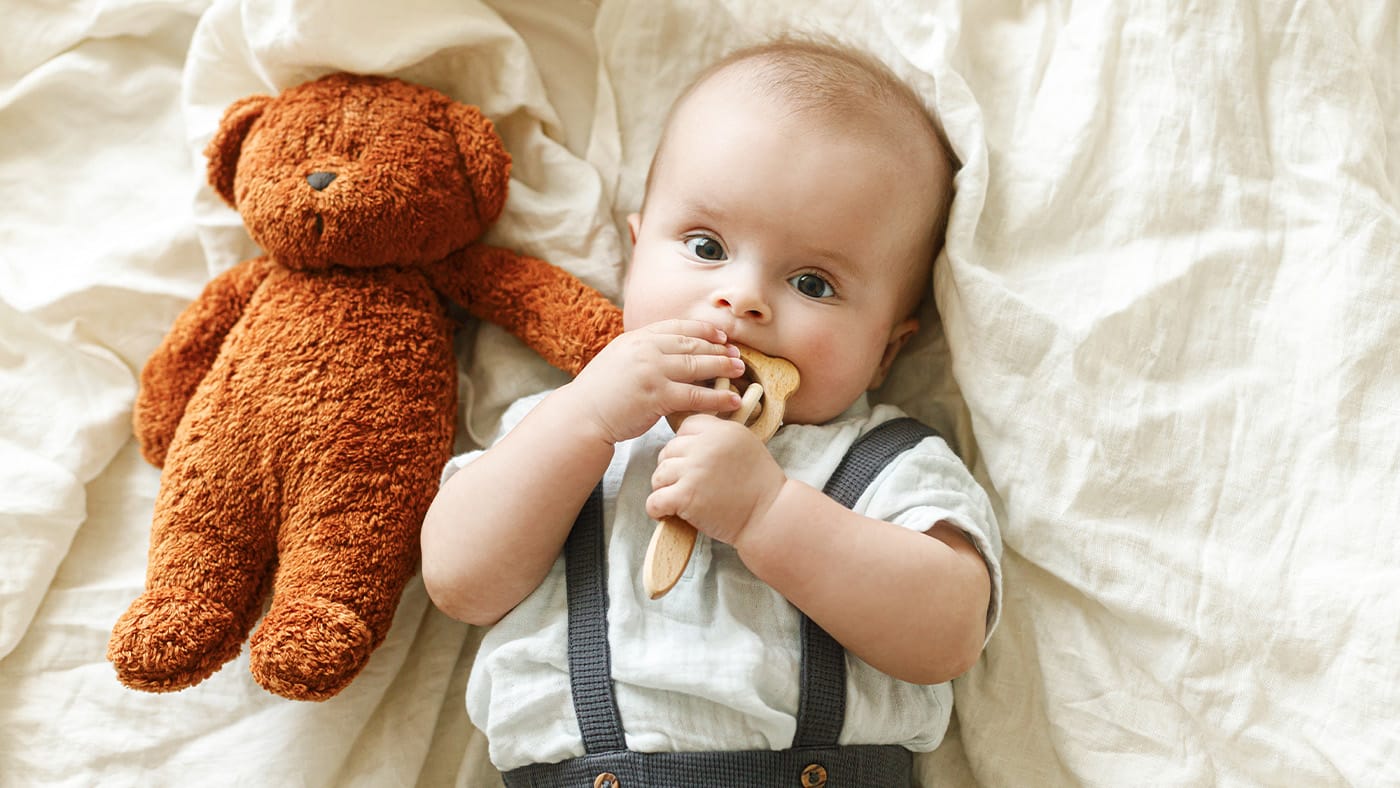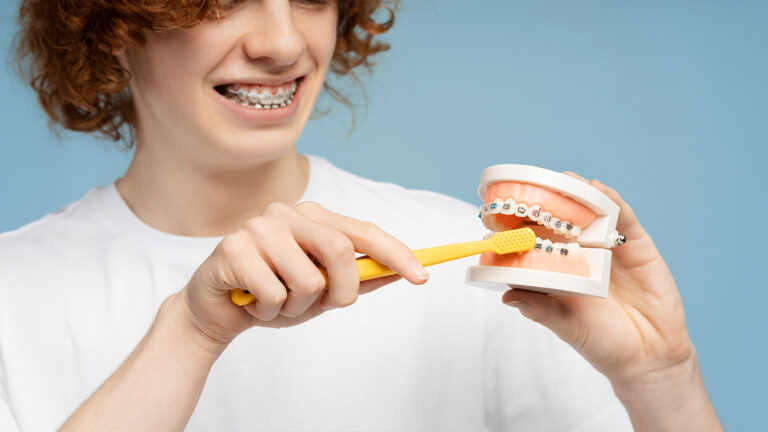Teething is an exciting time in your child’s life; it’s one of the earliest signs that your little one is growing up. While it’s an important milestone, it can also be a pain for babies and parents.
Babies are born with all or most of their primary teeth already developed inside the jaw, but it takes some time to erupt from the gums and make their first appearance. When that finally happens, usually around six months of age, we call it teething. Usually, the bottom two front teeth show up first, followed quickly by the top front teeth, known as the upper and lower central incisors.
By age three, the molars usually come in, and your baby will have a complete set of primary chompers. Along the way, they (and you) might endure quite a bit of crying and sleepless nights.
How to Soothe Sore Gums During Teething
Typical teething symptoms include increased drooling, sore gums, crankiness, face rash, a slight rise in temperature, and a seeming obsession with chewing on hard objects. If you see other symptoms like excessive crying, diarrhea, or fever, talk with your child’s pediatric provider, as they may be unrelated to teething. For everything else, you can get by with a few common tips and tricks!
Massage Baby’s Bums
Gently rub the gums with wet gauze or a washcloth for two minutes. Gentle pressure helps relieve pain, and cleaning the gums twice daily helps to set your child up to develop good brushing and flossing habits.
Cool Things Down
If the gums are swollen or sore, cold temperatures could help to relieve the pain. Objects like teething rings, pacifiers, and wet washcloths can be placed in the fridge and chilled before being offered to a child. Never place teething tools in the freezer; teething on frozen objects can lead to injury. Once your child reaches their first birthday, you can offer frozen fruit or juice pops.
Tiny teeth can poke holes in teethers and pacifiers, look for teething rings filled with distilled water or made of solid rubber. Avoid dipping teethers or pacifiers into sugary drinks. While it makes them more appealing to little ones, it can also cause early cavities. Keep an eye on your baby when they are using a teether or pacifier to ensure they use them safely. When left unattended, teethers can pose a choking hazard.
Help with Teething Pain
Most teething pain can be soothed with at-home remedies, but over-the-counter pain relievers like children’s acetaminophen (Tylenol) can be used sparingly. Don’t use pain medications for more than a couple of days in a row, and talk with your pediatrician if pain is severe or lasts a long time.
Avoid products containing benzocaine (found in products like Orajel), lidocaine (found in products like Aspercreme and Icy Hot), or homeopathic products. In 2018, some homeopathic remedies were taken off store shelves when they were found to contain dangerous levels of Belladonna, otherwise known as Deadly Nightshade.
Keep Baby Clean and Dry
Teething stimulates saliva production, so teething babies drool a lot! That’s not a problem in and of itself, but if left untended, excess saliva can cause skin irritations around the mouth, face, and neck. Keep a clean cloth handy and wipe away drool on a regular basis.
How to Protect Your Baby’s New Teeth
Newborn Gum and Teeth Brushing
Wipe them with a soft, clean cloth at least twice per day. At a minimum, you should clean the gums and teeth after feeding in the morning and before bed. Cleaning the teeth or gums at least twice a day will help prevent the buildup of harmful bacteria and establish healthy lifelong dental habits.
After Baby’s First Tooth Erupts
Switch out the clean cloth for a small, soft-bristled toothbrush after your baby gets their first tooth. Apply a small amount of fluoride toothpaste, about the size of a grain of rice. Now that fluoride has been removed from our public water system here in Utah, your child will need to get this crucial protective mineral from other sources. When your child gets a little older and can successfully spit out toothpaste every time, you can increase the amount of toothpaste to about the size of a pea.
Schedule Your Child’s First Dental Exam
Visit a pediatric dentist within a few months of the first baby tooth eruption or by the first birthday, whichever comes first. We offer a free pediatric dental exam for kids three and under to check on those first teeth and help your child get familiar and comfortable with the dentist. While you’re there, talk to your pediatric dentist about fluoride to protect your child’s tiny teeth long-term.




